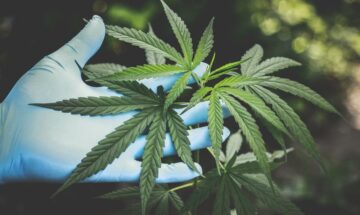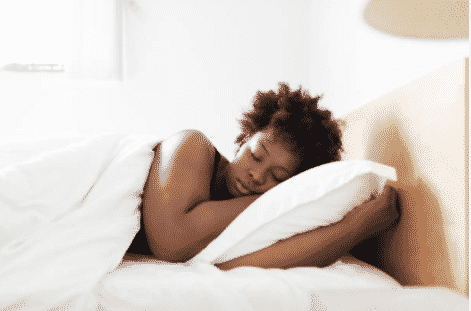Caffeine as a Stimulant
The caffeine content of beverages varies widely, and coffee is the primary source of dietary caffeine consumption. The International Coffee Organization says coffee lovers consume approximately 1.6 billion cups of coffee every day. The U.S. Food and Drug Administration (FDA) says about 80 percent of U.S. adults take some form of caffeine every day. According to a survey conducted by the National Coffee Association (NCA) on 3,000 respondents, more Americans are drinking a cup of coffee every day than they have been for the past six years. What made people more addicted to drinking coffee? The answer is in the caffeine, which, as a stimulant, acts on the brain and nervous system.
Numerous prescription and non-prescription pharmaceutical preparations make use of caffeine. There are some health benefits to caffeine consumption. In small doses, caffeine can make one feel reinvigorated and attentive. In large doses, however, one is likely to feel apprehensive and have trouble sleeping. As in many other drugs, there is a possibility that one could develop a tolerance to caffeine, which means ever-larger quantities are required to achieve the same result.
CBD and THC
People most often think of marijuana when they hear the word “cannabis”, but THC, which is the one responsible for getting a user high, is not the only component. CBD (cannabidiol) is the second most predominant of the active components of cannabis (marijuana), and it is an essential component of medical marijuana. Cannabidiol is from the hemp plant, which is related to the marijuana plant. Tetrahydrocannabinol (THC), on the other hand, is the primary psychoactive compound in marijuana that gives the high sensation when one smokes it. But THC is also available in oils, edibles, tinctures, capsules.
Like THC and CBD, phytocannabinoids are cannabinoids, which are chemical compounds in the cannabis plant. The term ‘phyto’ pertains to the definition “derived from plants”, but most people refer to phytocannabinoids only as cannabinoids. While there are minimal differences between the two terms, experts typically use them interchangeably.
CBD and THC may have comparable chemical structures, but despite that, they do not have the same psychoactive effects. Cannabidiol is a non-psychoactive compound, which means it does not produce the “high” associated with THC. THC binds with the cannabinoid 1 (CB1) receptors in the brain and produces a high or sense of euphoria. Cannabidiol, however, binds very inadequately to CB1 receptors. It can even interfere with the binding of THC and dampen the psychoactive effect.
Understanding the Effects of CBD
Cannabis sativa L. (Cannabaceae), a type of cannabis plant, is one of the most recognized ancient plants. It belongs to the category schedule I drug in the United States but is acknowledged in 16 states and the District of Columbia for therapeutic purposes. However, marijuana is defined as cannabis, and cannabis covers the marijuana cultivar and the hemp cultivar. When the U.S. President Trump signed the 2018 Farm Bill, he removed hemp from the Controlled Substances Act (CSA) as long as it contains less than 0.3 percent THC, the psychoactive component.
Cannabinoid receptors in humans and some animals collaborate with message transporters called cannabinoids. When they work together, they generate a succession of responses that are intended to bring functions back into equilibrium. In the body, CBD and THC interact with cannabinoid receptors to help cure or limit the effects of certain medical conditions.
CBD also impacts non-cannabinoid chemicals. Dopamine, the chemical which plays an essential role by which we feel pleasure or a sense of reward, also interacts with CBD. Dopamine plays a role in how we feel pleasure. Dopamine influences our unique ability as humans to think and plan. CBD can block the sensitivity of the brain’s dopamine system to respond to drugs like amphetamine. CBD has been shown to prevent the brain’s dopamine pathways actively and may possess anti-addiction characteristics as well.
CBD products are available over the counter and online. One may take CBD in several ways — from smoking and vaping to giving the oil or extract sublingual. CBD is also accessible in the form of pills or food products like gummy candies, as well as in skin creams and patches.
Consumers can purchase CBD oil separately and use it orally. They may bake delicious treats with this oil, or make beverages with it, such as fortified coffees and teas. The results on the body from consuming CBD varies from person to person. Some adverse side effects may include nausea, fatigue and irritability. In many cases, CBD brings about energy, making a person more alert and active.
Meanwhile, in other people’s experience, CBD can produce just the contrary reaction. In very high doses, the latter group of people reported feeling drowsy after consuming CBD, as higher doses of CBD can cause a slight drop in blood pressure. According to professionals and even the World Health Organization, even in extremely significant quantities, CBD can probably cause extreme sleepiness, lethargy, upset stomach, nausea, jitters and diarrhea, not death.
One prominent figure in the field of Science related to the use of cannabis for medical purposes is Dr. Bonni Goldstein. As a licensed physician for 27 years, she focused on medical cannabis for the last decade. She is currently the Medical Director of Canna-Centers, a California-based medical practice dedicated to educating patients about the use of cannabis for severe and chronic medical conditions. Her work has helped shed light on the world’s most misunderstood plant, especially now that it is becoming more common to find in the coffee shops, CBD mixed with one’s favourite coffee.
CBD Infused Coffee
Research about what happens when one mixes CBD with caffeine is slightly erratic, as the exact interaction that could result from the combination of these compounds is still unknown. More research needs to happen, although there is already a lot of anecdotal evidence out there.
One might assume that the jolt brought about by his or her morning brew might prevent him or her from enjoying the calmness brought about by the CBD. But, according to some accounts, this is not always the case. Even Dr Bonni Goldstein said that figuring out how someone would react to CBD differs in each case. She explains, “At low doses, CBD is a stimulant, and in higher doses, it can cause sedation. Someone’s reaction to a combination of these compounds would not be easily predictable because various doses of each would affect the response.”
CBD naturally helps promote a calmer, more relaxed demeanour, so it is perfect for those who like the alertness, but not the increased heart rate, shakes, irritability, or jumpiness that sometimes comes with a morning latte. Users claim to have a heightened sense of concentration and a more optimistic attitude. Just the absence of anxiety or stress can be a means to get a much-improved sleep at night and a more relaxed time going about one’s routines in the morning.
Getting CBD and caffeine at the same time is also not difficult. To make CBD coffee, mix CBD into the brew. There are also delectable edibles like CBD brownies, cookies, or even gummies. That is a great way to get one’s daily CBD dose in a form that matches perfectly with coffee.
CBD Caffeine Chews and CBD Caffeine Pills
There are different kinds of CBD edibles in the market today to cater to the varied preferences of CDB enthusiasts. There are chews, pills, gummies, chocolates, and candies, and brownies. CBD edibles can vary significantly on potency, and they are ideal for people who have never tried CBD products before. A low-strength edible is ideal for those who want to experiment for themselves and use several CBD products at once. CBD energy chews contain caffeine for that energy boost, and they may be readily purchased online. Some popular brands are Hank’s HiNaturals, HQO, Dixie Kicks, and Holy Grail, to name a few. For CBD caffeine pills, there are Infinite CBD AM Capsules, Lazarus Naturals Energy Blend CBD Isolate Capsules, Earth Mined CBD AM Capsules.
CBD Caffeine Withdrawal
Some people are trying to eliminate coffee or significantly reduce the amount of their caffeine intake. However, making the transition may not be smooth or comfortable. Withdrawal symptoms associated with caffeine include depressed mood, poor concentration, headache, irritability, fatigue, lagging energy level, anxiety, and shaking. These symptoms can last from two to nine days. People who turned to CBD coffee did not experience these symptoms associated with caffeine. However, some people think that the reduction of withdrawal symptoms is experienced only as long as you continue using CBD until the withdrawal is over. They found that when they went back to their regular coffee after a few days of using CBD, they experienced the dreaded caffeine headache.
Conclusion
CBD is generally safe to consume, but it is best to start taking it in low doses. Some people take their CBD oil drops or capsules at the same time they drink coffee, or they infuse their caffeine beverages with CBD. One of the reasons that pairing CBD and caffeine has become popular is that the interaction with CBD oil cancels the side-effects of caffeine consumption. Combining CBD and caffeine is also almost effortless. However, take note that CBD loses its potency when it is subject to high temperatures. Allow your drink to cool down a little before you add your CBD, or opt for a chilled version of your favorite coffee or tea.
CBD Clinicals is reader-supported. When you buy through links on our site, we may earn an affiliate commission. Learn more



















